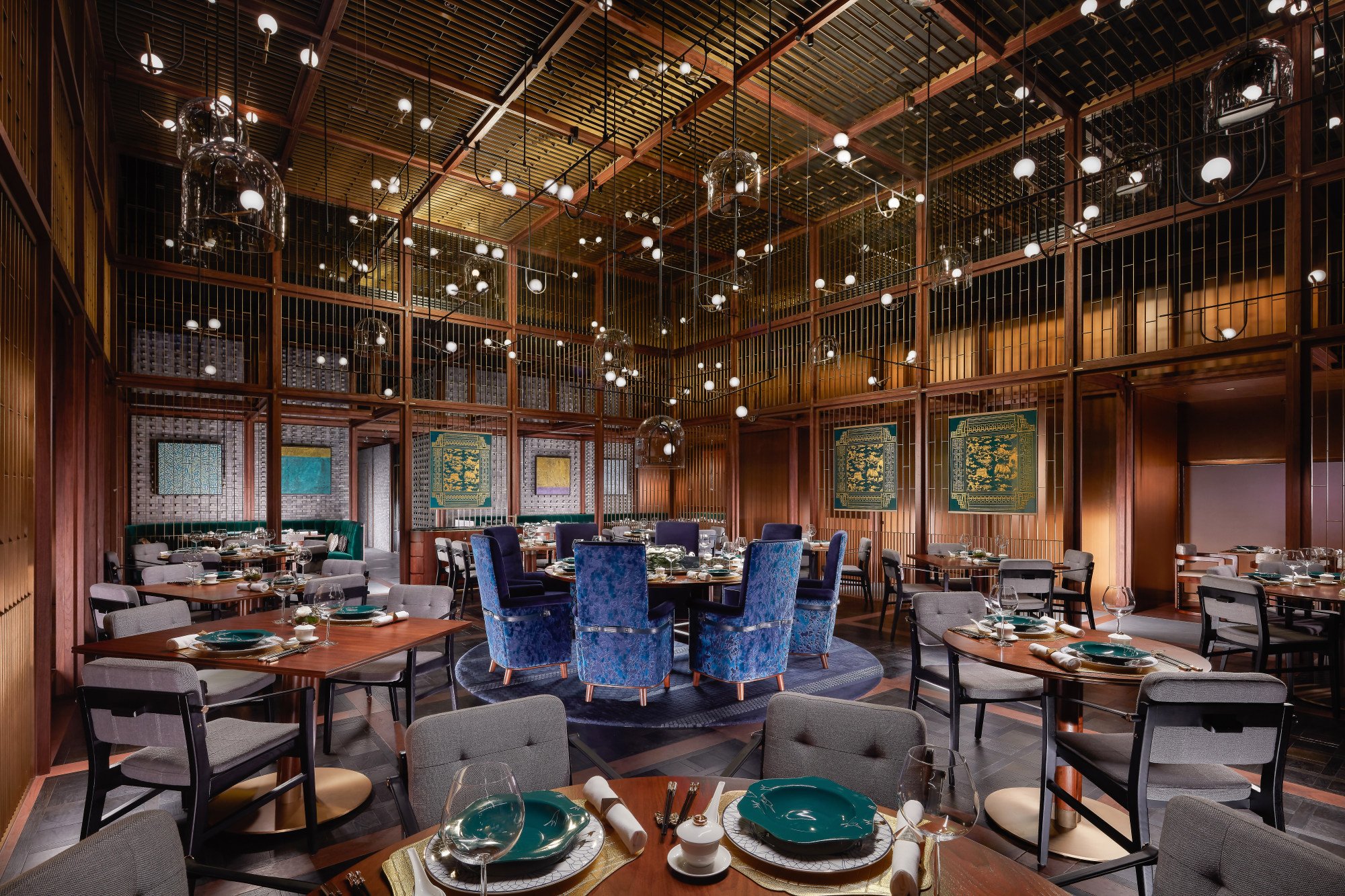Leung started working in a Cantonese restaurant kitchen in 1983 at the age of 13.
“I started as a dishwasher,” he recalls. “I worked my way up in a traditional Cantonese kitchen. In 1989, I travelled overseas and worked at different restaurants. I’ve been an expatriate since I was 19.”
Leung’s head start in the industry meant his climb to the top was fast, and he earned the nickname of the youngest Chinese master chef in Asia.
“I became the executive chef of a five-star hotel at 25 years old,” he says. “At the time, you didn’t find people of that age running such an esteemed establishment. It just didn’t happen.”
A private kitchen chef in Hong Kong aged 20, he was 8 when he first cooked
A private kitchen chef in Hong Kong aged 20, he was 8 when he first cooked
“The entire concept is about how I elevate traditional Chinese cuisine of different regions of China. How do we bring it to the next level? Over the years, I have explored Cantonese, Shanghainese, Beijing cuisine and more.”
“Take Thailand, for example. Most of the Chinese there are Teochew. And in Manila, where I also have a restaurant, a lot of the Chinese there are Hokkien,” he explains.
“In Singapore, the Chinese are Teochew, Hokkien, Cantonese and Hakka. So understanding the cuisine from these [people of] different regions gives me the fundamentals to summarise and elevate the cuisine. It’s what I’ve been doing my entire life.”

Leung’s latest opening is in Macau – Jiang Nan by Jereme Leung, at The Venetian Macao. Jiangnan is the part of China immediately south of the lower reaches of the Yangtze River, and includes the city of Shanghai and the southern part of Jiangsu province.
“Historically, Jiangnan is where some of the most affluent lived in China,” explains Leung.

While the presentation could give any French fine-dining institution a run for its money, the flavours on the palate were distinctly Chinese. Even the white truffles served to enhance the herbs and aspic of the Chinese-style pork terrine and add earthiness.
What showed Leung’s unique style was the Huzhou-style lamb, served in a simple noodle soup. The lamb broth clung perfectly to each strand of noodle, fine as hair – a statement in itself.

“The noodles is handmade and we can only cook it for 10 seconds,” says Leung. “But it has a distinctive bite to it that works well with the broth.”
Asked why he has not made his mark in Hong Kong yet, Leung says that it is simply economics.
“A Cantonese kitchen is actually compact and complex. You need someone to be in charge of the barbecued meat, such as char siu and roast goose, as well as a different chef for dim sum.
“There’s a separate chef for wok frying and another for knife work. When you think about the capital overhead and how many baskets of dim sum you have to sell to make up for it, then Hong Kong rental prices make it tough. But never say never.”






